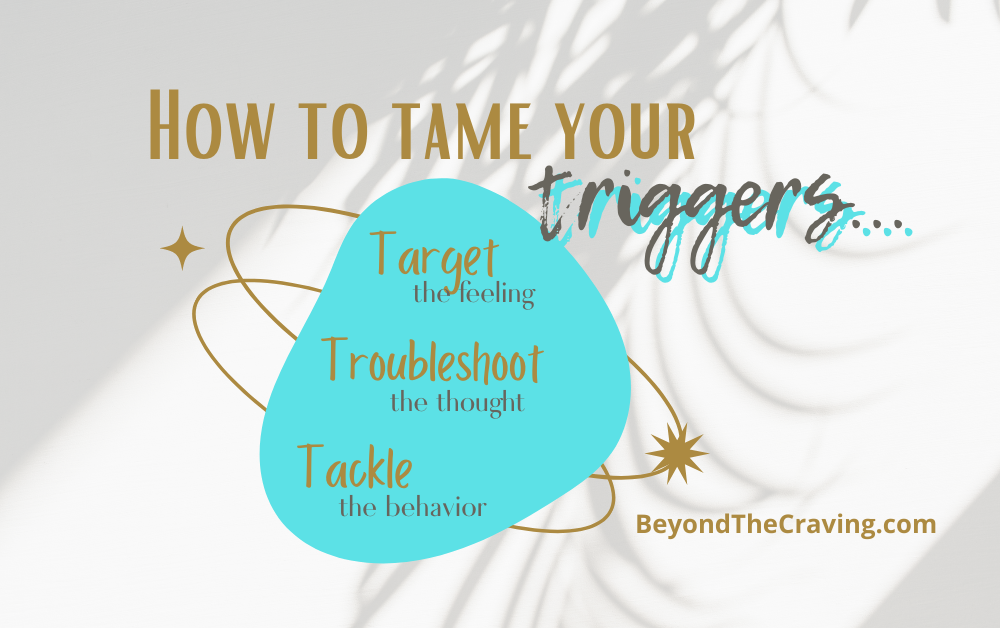And it will be said: “Build up, build up, prepare the road! Remove the obstacles out of the way of my people.” ~Isaiah 57:14
This weeks challenge is focused on identifying the triggers that trip us up and keep us stuck in habits and patterns of thinking that we want to change. Triggers come in all shapes and sizes—social, emotional, and physical. All of which makes this a highly loaded topic.
Unfortunately, taming and troubleshooting our triggers can be a messy job. Our task isn’t to tackle the entire vortex of issues all at once but to increase our awareness of them, how they influence our behavior, and finally how to make a few tactical changes that will help us to overcome them.
Emotional triggers are often a result of toxic thoughts that produce feelings of insecurity, fear, and anxiety, to name a few. We can also experience physical triggers such as dysfunctional people and unhealthy environments.
Similar to water that seeks the path of least resistance, so does our resolve when it comes to triggers. Thus, when we are swayed by these handicaps, we tend to travel outside the boundaries God originally intended because frankly, it’s just easier to bend toward the easy wrong versus the hard right.
More to the point, once triggers are activated, our emotional reaction blocks us from moving in the direction we really want to go. Because of this, we need to alter the trigger in some way or eliminate it altogether.
But keep in mind that even little changes are not for the faint of heart. Saying no to a person or situation isn’t easy. Altering the way we think or respond isn’t easy. In truth, it’s hard giving up habits that have helped us endure the pain and frustrations of life.
This process of taming our triggers takes energy, mental fortitude, and prayer. It’s a process. Focus on progress not perfection and let God lead the way.
Be bold. Be brave. Be free.
Tell Me More:
- Ask God to show you one trigger that keeps tripping you up.
- What purpose has it served and why are you holding on to it?
- How can you tame it, troubleshoot it, or eliminate it altogether?

